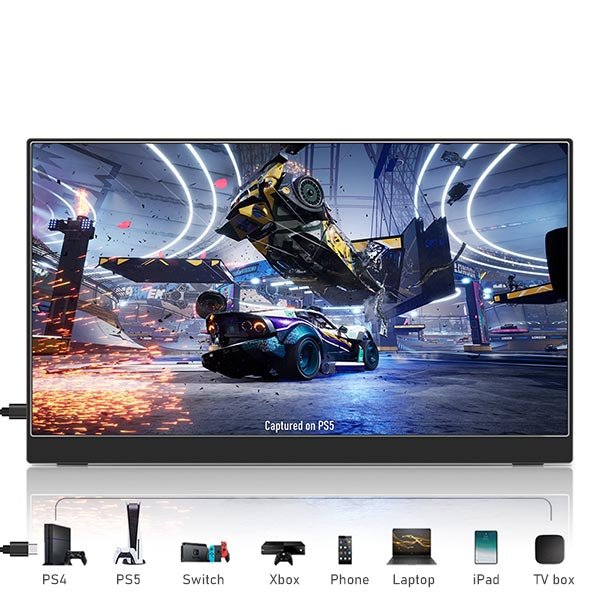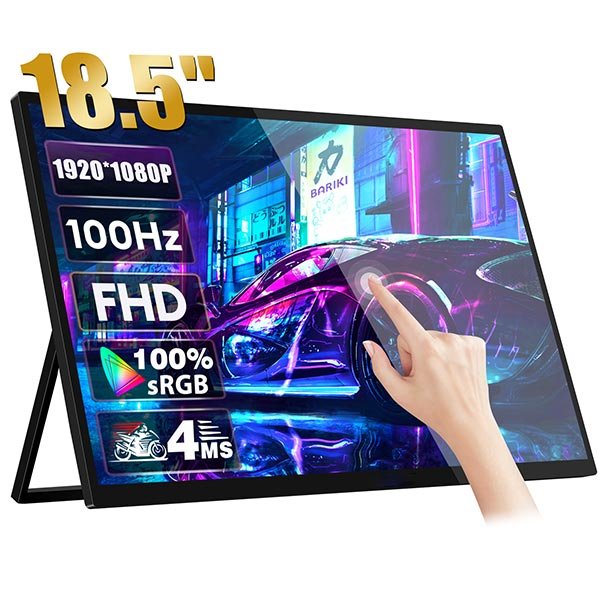up to 10% OFF!
Do You Need a High Refresh Rate Gaming Monitor?
If you’re a gamer, you probably know the importance of having a powerful graphics card and processor. But a high refresh rate gaming monitor also plays a vital role. In fact, one of the most important features of a gaming monitor is its refresh rate.
What is Screen Refresh Rate?

Refresh rate is the number of times per second that a monitor can change its image. It is measured in hertz (Hz), and the higher the refresh rate, the smoother the motion on the screen. A typical monitor has a refresh rate of 60 Hz, which means it can display 60 frames per second (FPS). However, many gaming monitors have higher refresh rates, such as 120 Hz, 144 Hz, or even 240 Hz. These monitors can display more frames per second, which can make a big difference in fast-paced games.
Why Does Refresh Rate Matter?

A high refresh rate monitor can provide several benefits for gamers, such as:
- Reduced motion blur: When a monitor has a low refresh rate, it can cause motion blur, which is when moving objects appear blurry or smeared on the screen. This can make it hard to track your enemies, aim accurately, or react quickly. A high refresh rate monitor can reduce motion blur by displaying more frames per second, which can make the image clearer and sharper.
- Increased responsiveness: When a monitor has a low refresh rate, it can also cause input lag, which is the delay between your input (such as mouse movement or keyboard press) and the corresponding action on the screen. This can make you feel like you are playing behind the game, which can affect your performance and enjoyment. A high refresh rate monitor can increase responsiveness by displaying more frames per second, which can make the game feel more fluid and responsive.
- Enhanced immersion: When a monitor has a low refresh rate, it can also break the immersion, which is the feeling of being fully engaged and absorbed in the game world. This can happen when you notice screen tearing, which is when the monitor displays parts of two different frames at the same time. This can create a jarring and unnatural effect, which can ruin your immersion. A high refresh rate monitor can enhance immersion by displaying more frames per second, which can make the game look more realistic and smooth.
How to Choose a High Refresh Rate Gaming Monitor?

If you are convinced that you need a high refresh rate monitor for your gaming setup, you might wonder how to choose the best one for your needs. There are several factors to consider, such as:
- Resolution: This is the number of pixels that a monitor can display, which affects the sharpness and detail of the image. The most common resolutions for gaming monitors are 1080p (Full HD), 1440p (Quad HD), and 2160p (4K). Generally, the higher the resolution, the better the image quality, but also the more demanding it is for your graphics card. You need to balance the resolution and the refresh rate according to your preference and budget.
- Panel type: This is the technology that a monitor uses to create the image, which affects the color accuracy, contrast, viewing angles, and response time of the monitor. The most common panel types for gaming monitors are TN (Twisted Nematic), IPS (In-Plane Switching), and VA (Vertical Alignment). Generally, TN panels have the fastest response time and the lowest input lag, but also the worst color and contrast. IPS panels have the best color and viewing angles, but also the slowest response time and the highest input lag. VA panels have the best contrast and decent color, but also the slowest response time and the highest input lag. You need to choose the panel type that suits your gaming style and preference.
- Adaptive sync: This is a feature that synchronizes the refresh rate of the monitor with the frame rate of the graphics card, which can eliminate screen tearing and stuttering. There are two main types of adaptive sync: G-Sync and FreeSync. G-Sync is developed by Nvidia and works only with Nvidia graphics cards. FreeSync is developed by AMD and works with both AMD and Nvidia graphics cards. You need to check the compatibility of your monitor and your graphics card before buying an adaptive sync monitor.
